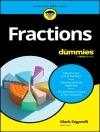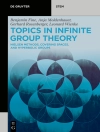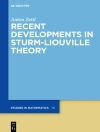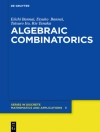Martin Grötschel is one of the most influential mathematicians of our time. He has received numerous honors and holds a number of key positions in the international mathematical community. He celebrated his 65th birthday on September 10, 2013. Martin Grötschel’s doctoral descendant tree 1983–2012, i.e., the first 30 years, features 39 children, 74 grandchildren, 24 great-grandchildren and 2 great-great-grandchildren, a total of 139 doctoral descendants.
This book starts with a personal tribute to Martin Grötschel by the editors (Part I), a contribution by his very special “predecessor” Manfred Padberg on “Facets and Rank of Integer Polyhedra” (Part II), and the doctoral descendant tree 1983–2012 (Part III). The core of this book (Part IV) contains 16 contributions, each of which is coauthored by at least one doctoral descendant.
The sequence of the articles starts with contributions to the theory of mathematical optimization, including polyhedral combinatorics, extended formulations, mixed-integer convex optimization, super classes of perfect graphs, efficient algorithms for subtree-telecenters, junctions in acyclic graphs and preemptive restricted strip covering, as well as efficient approximation of non-preemptive restricted strip covering.
Combinations of new theoretical insights with algorithms and experiments deal with network design problems, combinatorial optimization problems with submodular objective functions and more general mixed-integer nonlinear optimization problems. Applications include VLSI layout design, systems biology, wireless network design, mean-risk optimization and gas network optimization.
Computational studies include a semidefinite branch and cut approach for the max k-cut problem, mixed-integer nonlinear optimal control, and mixed-integer linear optimization for scheduling and routing of fly-in safari planes.
The two closing articles are devoted to computational advances in generalmixed integer linear optimization, the first by scientists working in industry, the second by scientists working in academia.
These articles reflect the “scientific facets” of Martin Grötschel who has set standards in theory, computation and applications.
Tabella dei contenuti
Martin Grötschel – a tribute: M.Jünger and G.Reinelt.- Facets and rank of integer polyhedra: M.Padberg.- Constructing extended formulations from reflection relations: V.Kaibel and K.Pashkovich.- Exact algorithms for combinatorial optimization problems with submodular objective functions: F.Baumann, S.Berckey, and C.Buchheim.- Solving k-way graph partitioning problems to optimality: The impact of semidefinite relaxations and the bundle method: M.F. Anjos, B.Ghaddar, L.Hupp, F.Liers and A.Wiegele.- Mirror-descent methods in mixed-integer convex optimization: M.Baes, T.Oertel, Ch.Wagner and R.Weismantel.- On perspective functions and vanishing constraints in mixed-integer nonlinear optimal control: M.Jung, Ch.Kirches, and S.Sager.- Beyond perfection: computational results for superclasses: A.Pecher and A.Wagler.- Algorithms for junctions in acyclic graphs: C.E. Ferreira and A.J.P. Franco.- A primal heuristic for nonsmooth mixed integer nonlinear optimization: M.Schmidt, M.C. Steinbach, and B.M. Willert.- Flow-Over-Flow Models and an Application to the Scheduling and Routing of Fly-in Safari Planes: A.Fügenschuh, G.Nemhauser, and Y.Zeng.- How Many Steiner Terminals Can You Connect in 20 Years?: R.Borndörfer, N.- D.Hoang, M.Karbstein, Th.Koch, and A.Martin.- Robust heaviest connected subgraphs in networks: E.Alvarez Miranda, I.Ljubic, and P.Mutzel.- Algorithms for scheduling sensors to maximize coverage time: R.da Ponte Barbosa and Y.Wakabayashi.- From vertex-telecenters to subtree-telecenters: Z.Win and C.Kyi Than.- A new algorithm for MINLP applied to gas transport energy cost minimization: B.Geißler, A.Morsi and L.Schewe.- Progress in academic computational integer programming: Th.Koch, A.Martin, and M.E. Pfetsch.- Mixed Integer Programming: Analyzing 12 Years of Progress: T.Achterberg and R.Wunderling.












